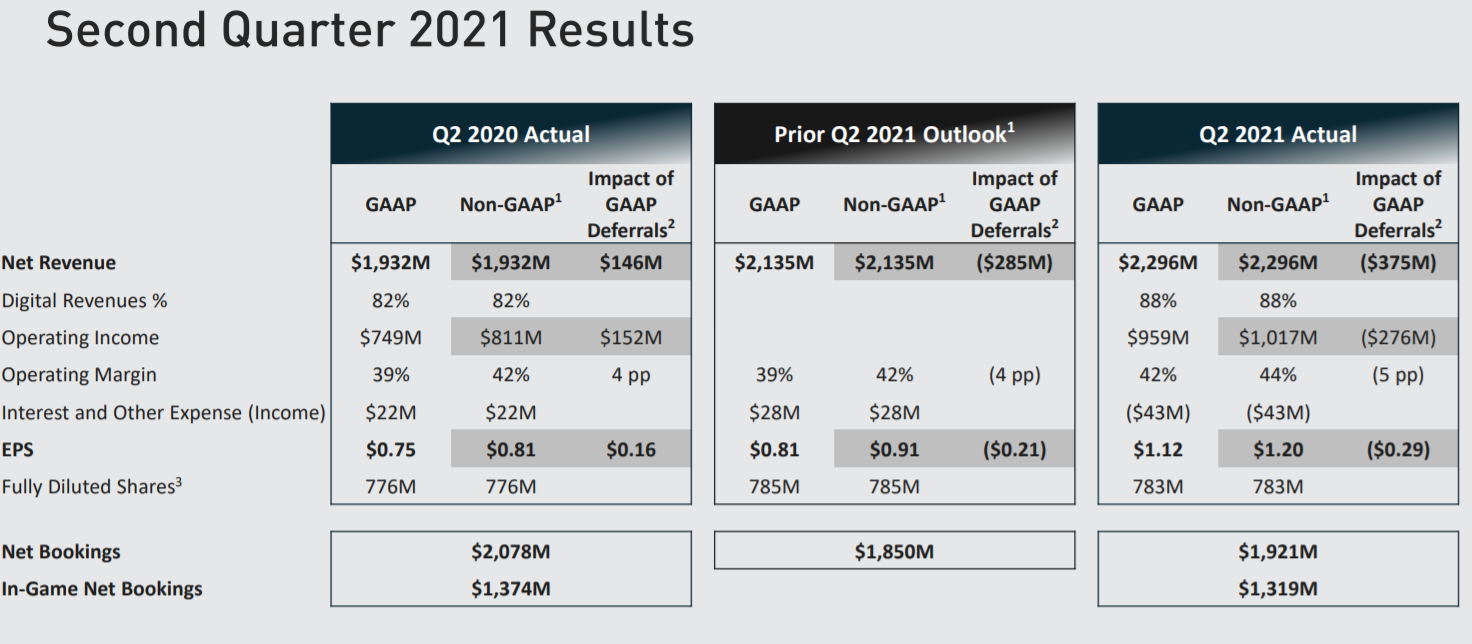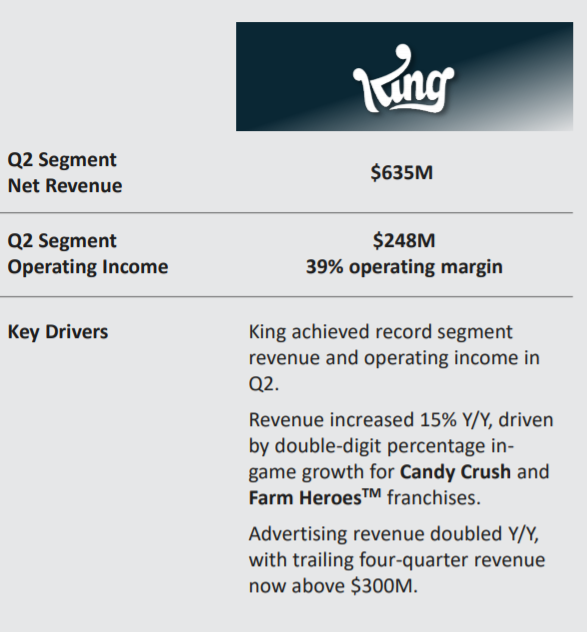The main thing from the Activision Blizzard report: revenue of almost $2.3 billion and profit of $876 million
Activision Blizzard shared the results of the second quarter of 2021 (ended June 30). Although the company’s overall revenue grew, its only division that earned more than a year ago was King. Also in the report there was a place for measures that the publisher is going to take because of the current scandal.
Key figures:
- In total, Activision Blizzard earned $2.29 million in the quarter — 19% more than in the second quarter of 2020;
- the publisher’s net profit for this period amounted to $876 million. Growth in annual terms by 51%;
- In-game receipts (In-Game Net Bookings) fell by 8% compared to last year to $1.3 million;
- 83% of Activision Blizzard’s revenue came from digital sales, which reached $1.9 million. They have fallen by 8.6 over the year%;
- the total number of monthly active users in the company’s games is 408 million.
The main drivers of Activision Blizzard’s growth, as in previous quarters, calls the expansion of the audience, increased engagement and the fact that gamers are willing to spend more money.
The publisher also noted the successes of the main franchises: Call of Duty, World of Warcraft and Candy Crush. Over the past two years, revenue from them has grown significantly, and it continued to grow in the second quarter of 2021.
Activision Metrics:
- in April-June, the division’s net revenue amounted to $789 million — 20% less than in the second quarter of 2020;
- The total MAU of Activision games has also fallen. It decreased by 2% to 127 million people;
- Activision is pleased with how the Call of Duty development strategy works (we are talking about the publication of both paid and free-to-play titles, the release of games on all platforms and the constant updating of content). Since the launch of the strategy in the games of the franchise, the reach, engagement and spending of users have increased;
- total sales of Call of Duty games have become more stable compared to the same period in 2020 and have tripled relative to 2019;
- Call of Duty: Mobile‘s digital receipts have risen significantly (the company did not say exactly how much). This was achieved thanks to the release of the game in China and the release of seasonal updates in Europe. By the end of the year, the title’s revenue may exceed $ 1 billion;
- In a conversation with investors, Activision confirmed that it has opened a mobile studio that will deal with Call of Duty games.
Blizzard Metrics:
- Blizzard earned $433 million in the second quarter of 2021 — 6% less than in 2020;
- The total MAU of the division’s games fell by 19% to 26 million people;
- the World of Warcraft franchise has shown good results. Receipts in it have increased markedly in annual terms due to the release of the World of Warcraft: The Burning Crusade supplement;
- the release of Diablo 2: Resurrected is scheduled for September 23, but for the mobile Diablo Immortal it was postponed to the first half of 2022. Work on Diablo 4 continues, but the release date of the game is still unknown.
King Indicators:
- King became the only Activision Blizzard division to have increased revenue compared to the second quarter of 2020. It rose by 15% and amounted to $635 million;
- but like the rest of the divisions, the total MAU of its games decreased by 6% to 255 million people;
- Candy Crush remains King’s highest-grossing franchise on the American market (its earnings are not disclosed).
In its report, Activision Blizzard also mentioned the scandal that has been unfolding around the company over the past few weeks. She stated that she would become more active in combating discrimination and harassment. The publisher intends to investigate all complaints and dismiss managers who commit such violations. The content in the games that users complained about due to the scandal will be deleted.
Activision Blizzard has warned that due to litigation, revenue may fall in the future. Nevertheless, in the third quarter, the company hopes to earn $1.9 billion — less than in the second quarter, but 1% more than in 2020.





